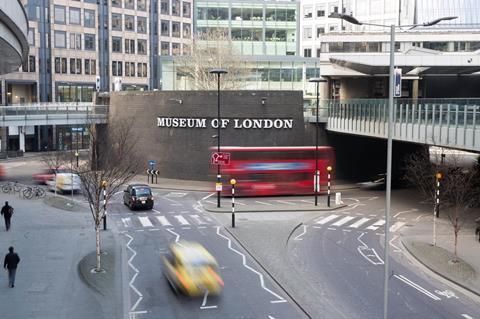The City of London’s Culture Mile proposal is a bloated distraction from what London really needs to focus on, says Hank Dittmar

In a campaign reminiscent of the lobbying for the Garden Bridge, the Barbican and the corporation for the City of London last week announced its “mile of culture”, aiming to remake the City into London’s arts hub with a series of pricey projects.
This is the next phase of the campaign to make the Square Mile a “24-hour” place of work and consumption, with the first phase being the introduction of retail and dining with such projects as the Walkie Talkie and the parasitic PacMan of One New Change.
This initiative has three parts: the move of the Museum of London to Smithfield Market, a promised series of pop-ups and other events, and the building of a new concert hall for the London Symphony Orchestra on the Museum of London site next to the Barbican. The desire for a new symphony hall for London appears the perfect mixture of hubris with a solution looking for a problem. The genesis of the project was Simon Rattle’s dissatisfaction with the Barbican as a home for the LSO.
The initial feasibility study published in 2015 was sponsored by the City of London Corporation and the government and only looked at sites within the Square Mile, concluding that the roundabout near the Barbican containing the Museum of London, owned by the corporation, was the ideal choice. There was no effort to examine, for example, Leon Krier’s provocative proposal for a classical hall in what Terry Farrell calls the Nash Ramblas across from Regent’s Park. Krier’s idea, discussed in an earlier column, was for a public building in a grand procession of public and monumental spaces. Surely there are arguments for other sites, including on the South Bank.
Also not considered was an acoustic upgrade to the Barbican Hall, as the presumption was that a new world-class facility was needed to compete with Gehry’s Disney Hall, Paris’s Philharmonie, and Hamburg’s €789m Elbphilharmonie by Herzog & de Meuron.
The post-election decision of the government to withdraw support has not stopped the project, and proponents have pressed ahead, preceding the business case with an architectural selection process. The price tag has conveniently dropped slightly to the still breathtaking sum of £200-250 million, though one suspects it will creep back up as the project moves forward. Like the Garden Bridge, famous architects and the promise of an icon will be used to spearhead the lobbying effort.
The shortlist announced last month included stars of the millennium period, notably Norman Foster, Frank Gehry, and Renzo Piano along with Amanda Levete, Diller Scofidio & Renfro and Snohetta. Despite the appropriateness of classical music being housed in a classical building, no traditional architects got a look in. Neither did any of the UK’s younger generation of architects, as the query was geared towards larger practices.
The preoccupation with the Museum of London site has to do with the desire to locate the new venue near the Barbican, and this is in itself problematic. While the Barbican has its virtues, including its beautiful courtyard, the appeal of its finely crafted flats as a residence for architects and other professionals, and excellent arts programming, it is emphatically set apart from the public realm and the city street. The megastructure ruptures the grid, with Beech Street, a dire polluted traffic sewer of a tunnel its only connection to the city. The “Culture Mile” announcement airily proposed to transform Beech Street, magically removing air pollution, brightening it and programming it with art and pop-ups.

The Museum of London site sits in another traffic sewer, a roundabout, accessed from above, and the notion of placing a concert hall within this space seems to guarantee a piece of fortress architecture connected to the ramparts rather than an open public venue. To do otherwise would require a heroic feat of urban design that is unlikely with this shortlist.
Certainly there is a place for grand projects in today’s world. But the motivation for this project seems to be to keep up with other cities in the iconic concert hall race, and this reminds me of the continuing justification that we must build residential towers to keep up with Singapore and the rest.
Perhaps the race that needs to be won is not the symbolic one of having the newest and shiniest icon. London, including the Square Mile, needs to look to preserve its place in the creative economy by ensuring that young people can stay here, addressing the closure of small venues and galleries, the need for studios and affordable work space, and for housing.
All of these challenges will usefully employ the talents of British architecture firms of all sizes.
















15 Readers' comments